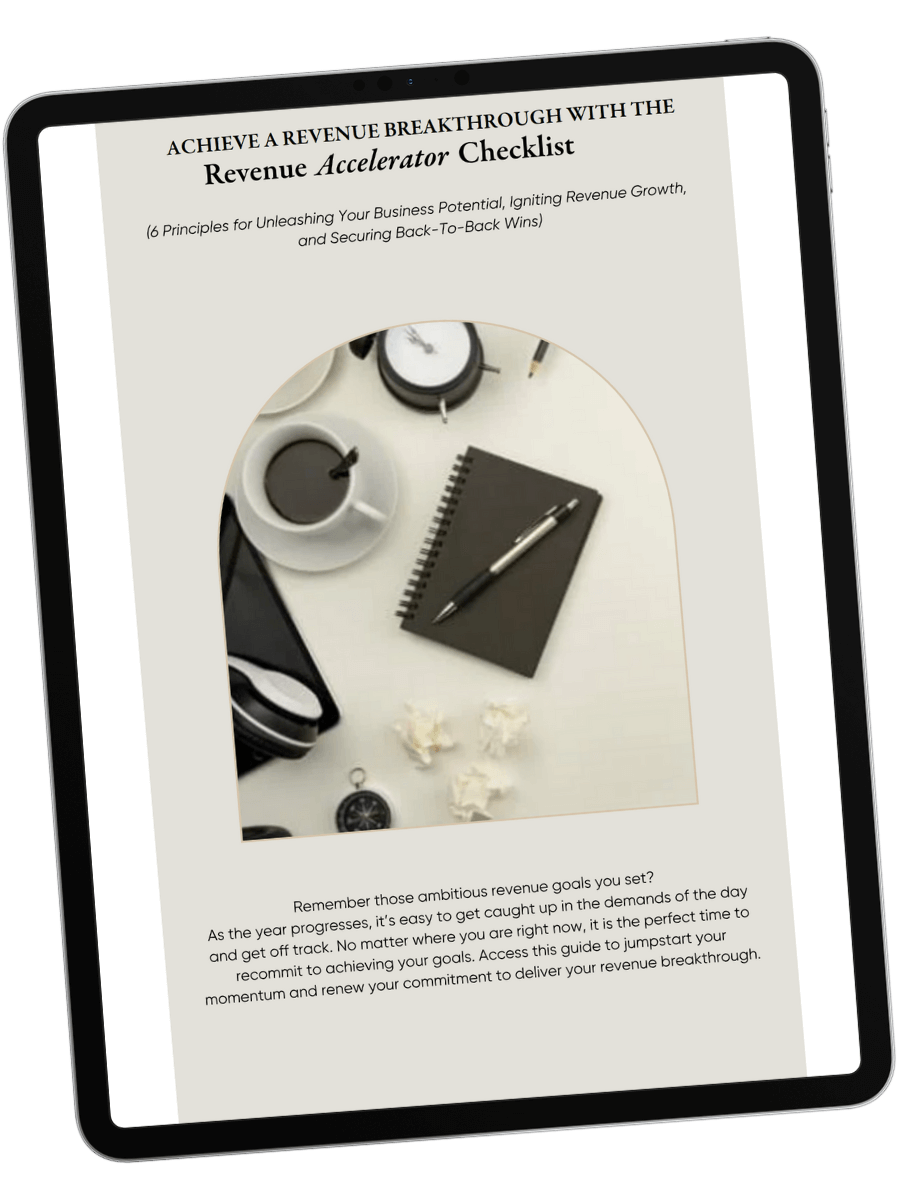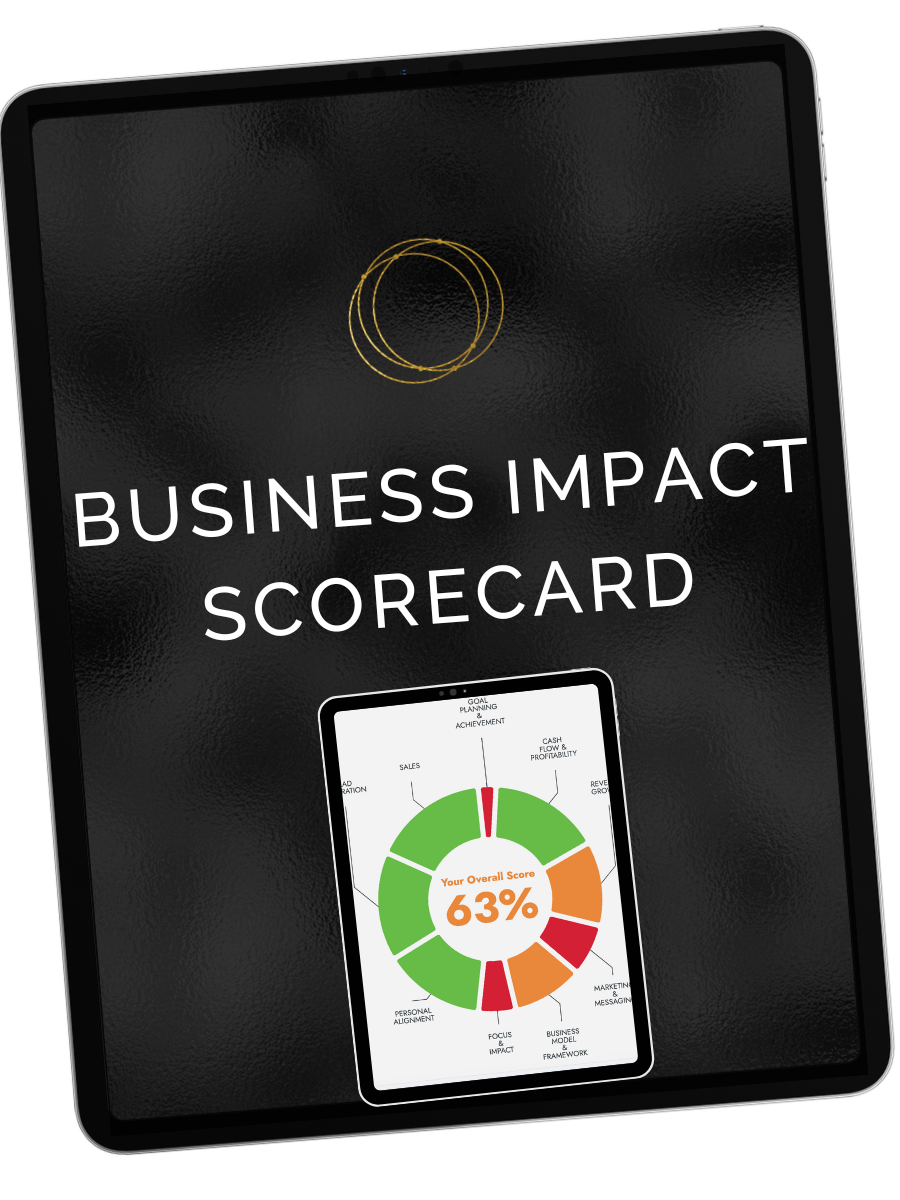CREATING A BREAKTHROUGH CLIENT EXPERIENCE
As a business performance strategist, I spend a lot of time with talented entrepreneurs focused on accelerating revenue growth. We work diligently on establishing profitable revenue streams, and developing products and services that meet the needs of their clients.
We also exert quite a bit of effort on creating a breakthrough client experience. Because inevitably, happy and satisfied clients become a source of continuous revenue. But despite that, not a lot of business owners focus as much attention on the client experience as they do on growing lists and social media. The reality is if you exceed your client’s expectations, they will become your best source of referrals, word of mouth advertising, positive testimonials, and revenue growth.
WINNING THE HEAD AND THE HEART OF YOUR CLIENT
Creating a breakthrough client experience isn’t a daunting task. It just requires intentional focus and persistent action. And it starts with the knowledge that you have to win the head and heart of your clients. You must create a meaningful and memorable experience. An experience that makes them feel understood, valued, and supported. And an experience where you come along in their journey to help them develop, grow, and achieve their goals.
If you are interested in creating a breakthrough client experience in your business, here are eight crucial touchpoints that you can impact and influence.
- Client Introduction – as you introduce yourself and your business to a prospective client, share your company values, how you work with clients, and the solutions you can provide to address their challenges and pain points. You would be amazed at how many entrepreneurs do NOT have a set of values that drive how they work with clients. Establishing company values is crucial because it creates a level of trust. And it demonstrates to the client what you value, how they will be treated, and what to expect.
- Client Onboarding – once they’ve decided to become a paying client, send them an onboarding kit that outlines the specifics of your service, the mechanics of your process, and how to communicate with each other. Remember, the objective is to reassure them that they made the right decision to work with you. You want to get them excited about the progress and growth they are about to experience. An effective way to convey this is to communicate how past clients felt pre & post engagement. They need to visualize it. It’s literally sharing client feedback and testimonials. You want to strive to create that feeling of accomplishment and success with them early on. You want them impatient to get started! Establish yourself as their partner and best advocate.
- Client Assessment, Meetings, and Calls – as prep for your first meeting, send a questionnaire to collect valuable information regarding their goals, challenges, and pain points. Utilize this information to kick off the first meeting. You want their goals and challenges to be front and center. The responses from the questionnaire will foster a discussion on how they’re feeling, where they are getting stuck & overwhelmed, where they need help, and how you can enable. You can utilize this to start guiding them through your framework and process. Every subsequent meeting should start with follow up items from the previous session to drive accountability. And the client should lead the agenda. But the business owner has to drive the framework or process.
- Client Feedback and Sensing – at certain intervals, you need to provide feedback as to how the client is progressing. Let’s be honest, we are creatures of habit. And most of us are eager to get feedback (positive or negative) as to how we’re progressing. High-performance individuals expect, seek out, and give continuous feedback! It’s shown that people who get consistent and actionable feedback progress quicker and tend to stay on track. Conversely, you need to be confident enough to ask how the process is going. I know this can be a little intimidating. But you can’t be effective if you’re not delivering the support or knowledge they need. This last action separates the amateurs from the professionals!
- Client Recognition – as clients progress, please recognize them when they hit certain milestones. That can be achieving a big win or success, taking decisive action on something difficult, or even working through a challenge so they can move forward. Think about those crucible moments you can highlight to build their confidence and momentum. Based on your style, you decide whether that recognition is delivered via email, verbally, with a written note, or maybe even through an audio or video message.
- Client Testimonials – ok, I’m going to say it. Client testimonials are as much for the client as they are for you! I recommend you develop a standard (but quick and easy) template to be used with every client to capture their success stories. A standard model will streamline the process and collect consistent information from each client. The next step is to leverage them with your client, on your website, in your marketing collateral, and as a feeder system to attract new clients. But there is one big watch out. Your testimonial template has to focus on RESULTS (not activities). What results and outcomes did the client deliver, how did your process enable them, and what positive benefits are they experiencing as a result of working with you. In other words, what are the OUTCOMES?
- Client Offboarding – the purpose of adequately offboarding your client is to close the loop on the process and their results. Offboarding is another example where a standard template is useful and simplifies the process. Focus on what worked, what did not work, and seek their input. You want to know if there was anything that was missing or could have been provided to make the experience better, more effective, or more efficient. This continual feedback loop will spur you to be better and better. You just have to ask. But communication shouldn’t stop there.
- Client Strategic Relationship – Assuming their experience and results were positive, immediately share options you have to continue working together. For example, you could introduce your advanced product, service, or program to move them into and expand their progress. A second option is to extend an invitation to group coaching or a Mastermind program. A third option is to link them to the tools and products you offer that are self-directed. Or you can give them advance notice of something new and exciting that’s launching in the near future. Make them feel special. And reward them for their loyalty and progress. Again, the key is creating a never-ending loop to keep them in your sales cycle longer. The objective is to create a long-term strategic relationship.
The challenge is to identify the crucial touchpoints where you interact with your clients. You want to highlight the value you bring and set yourself apart from the competition.
Here are a few tips to remember when creating your own breakthrough client experience.
- Win the head and the heart of your client
- Be consistent and intentional
- Standardize and automate your client process
- Map the crucial client touchpoints in your process where you can differentiate your business
LET’S CONNECT
- If you are ready to transform your business, accelerate your career, or develop high-performance talent, visit the contact page to schedule a strategy session.
- To join our community, you can subscribe to the email list, access the “Rule of Three” blog, or listen to the “Rule of Three” podcast. This is where I share insights, strategies, and solutions to help you in your journey.


